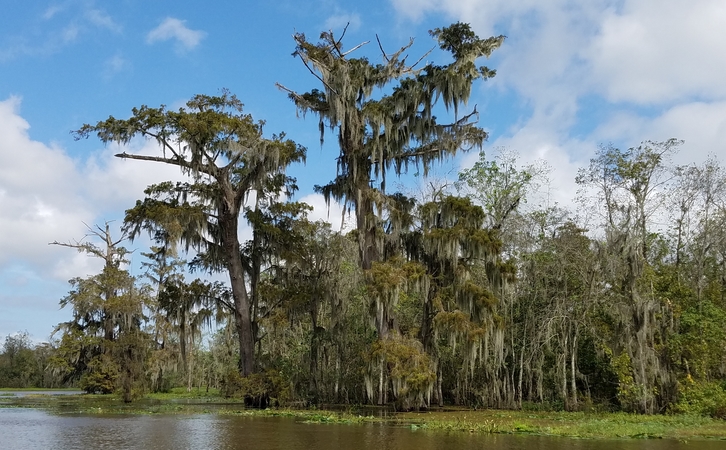On July 6, 2012, The RESTORE Act (the Resources and Ecosystems Sustainability, Tourist Opportunities, and Revived Economies of the Gulf Coast States Act) was signed into law as a result of the Deepwater Horizon oil spill. On April 20, 2010, the largest oil spill in American history decimated the Gulf Coast, causing significant environmental, ecological, and economic damage as well as killing 11 men and injuring 17 others.
This legislation established a framework for managing and financing the Gulf Coast’s recovery, allocating a great majority (80%) of Clean Water Act penalties from the spill for Gulf Coast restoration. In total, BP and other responsible parties settled for approximately $20 million. While it’s unfortunate that an environmental and human tragedy was the catalyst, the settlement set up a stream of funding for ecosystem restoration never before seen in our nation’s history.
In the decade since the passage of the RESTORE Act, Louisiana – the hardest hit state – has wasted no time implementing restoration and protection projects as funds became available, in large part due to planning efforts previously underway through the Coastal Master Plan. Under the RESTORE Act, Louisiana has implemented several projects including:
- Biloxi Marsh Living Shoreline
- Golden Triangle Marsh Creation
- Lowermost Mississippi River Management
- Mississippi River Reintroduction into Maurepas Swamp
- West Grand Terre Beach Nourishment and Stabilization
In 2020, the River Reintroduction into Maurepas Swamp project was awarded $130 million for construction funding. Once constructed, this project will benefit approximately 45,000 acres of coastal forest by reconnecting the Mississippi River and the Maurepas Swamp, thereby improving the swamp ecosystem health and function. LWF has long been a champion of this project. LWF hosted community meetings in 2018 to help educate the public on the importance of funding and implementing this project to protect surrounding communities. Following the announcement of the RESTORE funding, LWF hosted a reception at the LSU Center for River Studies to celebrate this huge milestone as the state takes its final steps to breaking ground on this restoration project decades in the making.
Construction funding was included for West Grand Terre Beach Nourishment and Stabilization (~$92.5 million), Golden Triangle Marsh Creation (~$50 million), and Biloxi Marsh Living Shoreline (~$66.6 million) with the 2020 approval of the Final Restoration Plan and Environmental Assessment #6: Restore and Conserve Wetlands, Coastal, and Nearshore Habitats. Together, these projects will create or restore more than 1,900 acres of marsh, beach, and dune habitat and protect more than 11.5 miles of shoreline.
Louisiana is no stranger to environmental threats – natural or man-made. Hurricanes Katrina and Rita in 2005 put in motion a whole new paradigm to address the vulnerabilities of our coast. The result of that paradigm shift was the creation of the Louisiana Coastal Protection and Restoration Authority (CPRA) which was tasked with developing a plan for a safe and sustainable coast, the Coastal Master Plan. This plan plays a critical role in the selection and development of projects during oil spill restoration planning.
While significant work has been done in the last decade with RESTORE Act funds, there is, as always, much left to do. LWF will continue to monitor progress of coastal restoration and advocate for adequate funding for projects to protect the people and wildlife of Louisiana’s Sportsman’s Paradise.
This Administration recognizes that a strong and vibrant ecosystem is the key to the Gulf’s future…As Chair of the Gulf Coast Ecosystem Restoration Task Force and a New Orleans native, I can tell you that a healthy ecosystem is vital to the economy and the way of life for the Gulf Coast. There’s a lot at stake in this region: the economies of the five Gulf States supported more than 19 million jobs and nearly $2.5 trillion of the U.S. GDP in 2008. In addition, millions of people visit the Gulf Coast each year – to vacation, to sail, to swim, to fish, and to enjoy this great waterbody. In 2008, national and international tourists spent about $145 billion in the 5 coastal states and around 1.7 million people were employed in travel and tourism.
During the oil spill, we essentially “lost” the Gulf for a period of time, and natural resources in the Gulf were extensively damaged. We lost the use of valuable fishing grounds, incredible recreational opportunities and all of the other benefits of a thriving, vibrant ecosystem. That loss helped show folks who aren’t from the Gulf Coast just how important it is to our nation.
But our goal and commitment is not simply to address the damage caused by the spill – it is to ensure the long term improvement and restoration of the Gulf Coast and its unique ecosystems.
Lisa P. Jackson, EPA Administrator
(White House Blog, June 29, 2012)
Additional Resources:
Community Guide to Coastal Restoration
Gulf Coast Ecosystem Restoration Council website
Deepwater Horizon 10 year report: A Decade after Disaster

